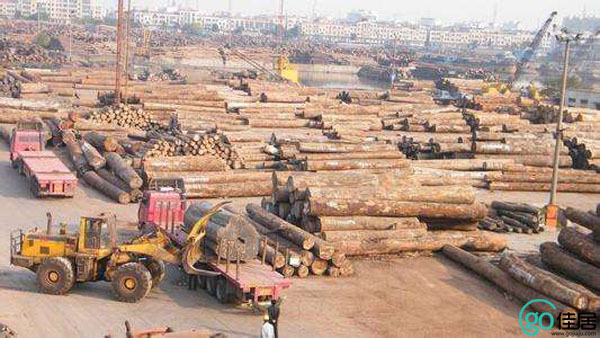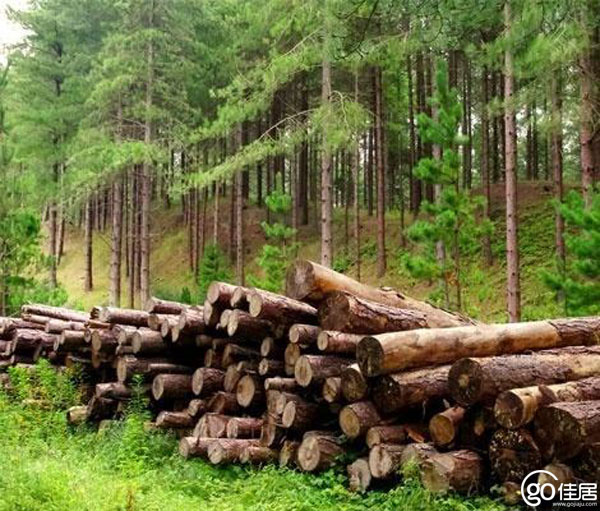Barry Furniture takes you to know what types of Burmese wood are
In the flooring and furniture materials, many friends will choose the material of solid wood, and in the solid wood material, Burmese wood has always been loved by everyone, what kind of Myanmar wood what kind ? The following Bai Rui furniture Xiao Bian will introduce to you a few common types of Burmese timber , please follow Xiao Bian together to see the classification of Burmese timber . What are the types of wood in Myanmar? Burmese teak Burmese teak, commonly known as hibiscus, blood tree, mali, and Thai pomelo, is a lip-shaped subfamily of dicotyledonous plants. Teak is a tropical tree species and requires higher temperatures. Vertical distribution is more common in low hills and plains below 700-800 meters above sea level. Teak does not crack when exposed to a large amount of rain and humidity in the sun. It is resistant to water and fire, and it resists termites and sea worms in different sea areas. It is extremely resistant to decay. Drying performance is good, adhesive, paint, waxing performance is good, wood hardness is relatively small, cutting is not difficult when processing, but because of the blunt knife containing silicone oil. The nail holding power is good and the overall performance is good, so it is a world-famous luxury tree species. Burma rosewood In addition to teak and hardwood, Myanmar also has abundant bamboo and vine resources. In Rakhine State alone, there are 7770 square kilometers of bamboo forest, which is calculated as a logging cycle in 10 years. The annual output is 2 million tons, equivalent to 800,000 tons. Bamboo pulp. There are 1,860 square kilometers of bamboo forest in Drindaey Province, which is calculated as a logging cycle in 10 years. The annual output is 600,000 tons, which equals to 200,000 tons of bamboo pulp. The annual output of rattan is about 67 million. Currently only a small part of it exports. Walnut Everyone is familiar with this type of wood and often uses it as furniture. There is no special odor. The texture of the wood is very clear and simple, with light reddish-brown or tan and some with some purple, very elegant. The difference in the material of walnut is relatively large, and most of the good walnuts are used for the production of relatively high-grade furniture. The edges are gray and there are special patterns in the roots. Burmese flower pear Burmese rosewood is a rosewood. Burmese rosewood has a clear wood grain structure, fine and uniform structure, some parts have a clear tiger skin pattern, and it is very beautiful intermittently; the color is red, the wood grain is light red, and the whole looks like flesh-colored; Burmese rosewood is again The fragrant pear has a sandalwood fragrance. Hard and heavy material, high density. The use of rosewood has a long history. It did not begin to rise in modern times. In the Qing Dynasty, many mahogany furniture was made from rosewood. Today, these long-established rosewood furniture has become a valuable and precious redwood classic and is highly sought after by collectors. Myanmar Redwood Burma mahogany, diffuse porous wood. The growth wheel is not obvious or slightly obvious. Heartwood new cut purple or dark red brown, often with dark brown or chestnut brown deep stripes. The tube holes are slightly visible under the naked eye and contain black gum; the chordwise diameter is 244 μm at maximum, with an average of 1 04 μm; the number is very small to slightly less, 2 to 13/mm2. Axial parenchyma is quite obvious, the main concentric stratified thin line (width of 1-4 cells, with the ray cross-locally slightly net or ladder-like), thin-winged. Wood fiber wall is very thick. Large trees, up to 25m in diameter, generally 0.5m in diameter. This genus is about 120 species, distributed in the tropical regions of the world, mainly imported from Burma, Southeast Asia, with a small amount. The main arrival is wood. In the domestic market, the majority of Burmese timbers are sold at prices ranging from RMB 2000-5000/m2, and most wood processing companies can afford them. In Europe and America and many Southeast Asian countries, due to the implementation of limited-cutting policies and high transportation costs, Due to the high labor cost, the price of related timber is often several thousand dollars or even tens of thousands of yuan. In contrast, it is not difficult to find that the price of Burmese wood is actually low. The variety is complete, with a certain degree of substitution. There are many kinds of trees in Myanmar, covering most of the species that Southeast Asian countries can produce. Some Burmese timbers are close to North American materials, African materials, and valuable Southeast Asian wood in terms of texture properties, color lines, etc. For example, Myanmar black walnuts and Betula alnoides can be used as alternatives to North American black walnuts and red oak, respectively. These are the types of Burmese wood that are introduced by the Furniture Network Xiaobian for everyone. These are the styles of Burmese wood that are common to everyone. When we are making solid wood furniture selections, we can consider Burmese wood. , And in the types of wood in Myanmar, we can follow the small series of the specific classification of the selection, I hope to help you. Precision Parts By Five-axis Machining
Precision parts are critical components of various products and machines that require precision and accuracy. The five-axis machining technology has revolutionized precision manufacturing by enabling the production of complex geometries with unparalleled accuracy.
Five-axis machining involves the use of a computer numerical control (CNC) machine that has five axes of motion – X, Y, Z, and two rotational axes. This advanced technology allows the machine to produce intricate and complicated parts with high precision and accuracy. Unlike 3-axis or even 4-axis machining, the five-axis machine can rotate and tilt the tool to machine parts from different angles, providing greater flexibility in terms of geometry and design.
Precision parts made using five-axis machining technology are popular in various applications, including aerospace, medical equipment, automotive, and electronics industry. These parts are designed to meet the most stringent standards, making them reliable and durable. The five-axis machine can achieve tolerances as low as 0.0001 inches, providing superior precision that is unmatched by manual machining.
One significant advantage of using five-axis machining technology is increased efficiency. The five-axis machine can perform multiple operations in a single cycle, reducing the time required to produce a part. It can handle complex designs with ease and produce highly accurate parts, making it ideal for applications that require high precision and accuracy.
Another advantage of five-axis machining is increased design flexibility. It allows designers to create highly complex geometries that were not possible with traditional machining methods. With five-axis machining, it is possible to manufacture parts with undercuts, curved surfaces, and geometries that are difficult to access using other machining processes.
In summary, precision parts made using five-axis machining technology offer superior precision, accuracy, and design flexibility. These parts are widely used in various industries, and their high precision and accuracy make them highly reliable in critical applications. As manufacturing technology continues to advance, we can expect more sophisticated techniques that will offer even greater precision and accuracy.
Five Axis Machining Parts,Precision Five Axis Machining Parts,Five Axis Processing Parts,Precision Five Axis Processing Parts Lizhi Precision Manufacturing Technology Co.,Ltd , https://www.lzautoindust.com
